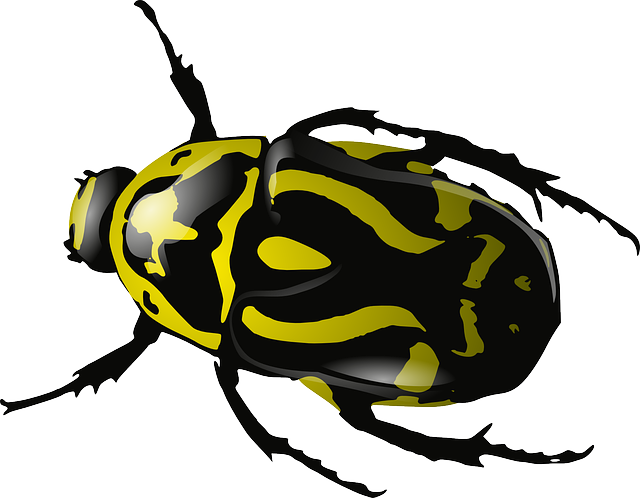Bed bugs, with their complex lifecycle and preference for hidden spaces, pose significant challenges in both residential and commercial settings. Commercial bed bug removal demands a sophisticated approach due to larger areas, high traffic, and diverse environments. It involves systematic inspections using advanced tools like detection dogs and LED flashlights, along with specialized treatments such as heat, chemicals, or steam. Prevention strategies include regular cleaning, sealing entry points, and employee/customer education about bed bug behavior. Regular, detailed inspections by professionals are crucial for early detection, empowering businesses to maintain a bed bug-free environment through effective commercial bed bug removal tactics.
“Uncover the secrets of comprehensive bed bug inspections, a vital step in ensuring a pest-free environment. This article guides you through the intricate process, from understanding these resilient creatures’ behavior to mastering specialized inspection techniques. We explore the distinct approaches for residential and commercial settings, emphasizing the unique challenges presented by each. Discover the tools and strategies that enable effective bed bug prevention and control, specifically tailored for businesses seeking efficient commercial bed bug removal.”
Understanding Bed Bugs: Behavior and Life Cycle
Bed bugs are resilient pests that have evolved over time, making them a challenging issue for both residential and commercial spaces. Understanding their behavior is key to effective bed bug inspections and subsequent removal strategies. These tiny critters feed on blood, primarily targeting humans and animals while they sleep, making homes and businesses alike susceptible to infestations. They are known to hide in crevices, cracks, and dark areas, multiplying rapidly under the right conditions.
The bed bug’s life cycle comprises several stages, starting from egg to adult. Female bed bugs lay eggs in clusters, often near where they feed. The eggs hatch into nymphs, which go through several molts before transforming into adults. Commercial bed bug removal often involves identifying these various stages, as it requires specialized techniques and products to target each phase effectively. Regular inspections are crucial for early detection, as prompt action can prevent a minor infestation from turning into a major problem.
The Difference Between Residential and Commercial Inspections
When it comes to bed bug inspections, whether in a residential or commercial setting, there are distinct differences in approach and considerations. Residential inspections often focus on identifying potential entry points for bed bugs, inspecting mattresses, furniture, and cracks in walls or floors. The goal is to detect early signs of an infestation and provide homeowners with the necessary tools to prevent or manage an existing issue.
In contrast, commercial bed bug removal requires a more comprehensive and systematic strategy due to the larger scale and diverse environments involved. Commercial spaces, such as offices, hotels, or apartment buildings, demand thorough inspections that account for high traffic areas, shared amenities, and potential hiding spots in intricate structures. Professional exterminators employ advanced techniques and tools tailored to commercial settings, ensuring effective bed bug elimination while adhering to industry standards and regulations.
Comprehensive Inspection Techniques and Tools
Comprehensive bed bug inspections require a meticulous approach and specialized tools. Professional inspectors employ advanced techniques to ensure every corner and crevice is examined, from wall crevices and floor gaps to furniture and bedding. High-quality magnifying glasses, LED flashlights, and specialized bed bug detection dogs are often utilized to identify the presence of these tiny pests.
In commercial spaces, a systematic search is conducted, taking into account the unique characteristics of different environments. This includes thorough inspections of offices, hotels, apartments, and retail stores. Commercial bed bug removal specialists may use heat treatment, chemical applications, or non-toxic methods like steam to eliminate infestations effectively, ensuring a safe and hygienic environment for both businesses and their customers.
Effective Strategies for Bed Bug Prevention and Control
Bed bug prevention is a multifaceted approach that combines proactive measures and effective control strategies. One of the primary steps is to maintain a clean and clutter-free environment, as bed bugs thrive in spaces where they can easily hide and access hosts. Regularly vacuuming floors, dusting surfaces, and washing linens at high temperatures (above 120°F) can significantly reduce the risk of infestation. Sealing gaps and cracks in walls, floors, and furniture also helps to prevent bed bugs from entering buildings, making commercial bed bug removal more manageable.
For businesses, implementing a comprehensive inspection program is crucial. This includes scheduling regular, detailed checks by trained professionals who can identify early signs of an infestation, such as tiny blood spots on bedding or mattress encasings. Using detection dogs and high-tech inspection tools further enhances the accuracy and speed of bed bug detection. Additionally, educating employees and customers about bed bugs, their behavior, and prevention tactics fosters a collective effort to maintain a bed bug-free environment, ultimately supporting effective commercial bed bug removal strategies.
Comprehensive bed bug inspections are key to effective residential and commercial bed bug removal. By understanding bed bug behavior, utilizing specialized inspection tools, and implementing robust prevention strategies, professionals can ensure these persistent pests are detected and eliminated promptly. Whether in a home or business setting, a meticulous approach to inspections allows for swift action, minimizing disruption and damage caused by these intruders. For commercial spaces, regular inspections and proactive measures are especially vital to maintain a pest-free environment, safeguarding both reputation and customer health.
